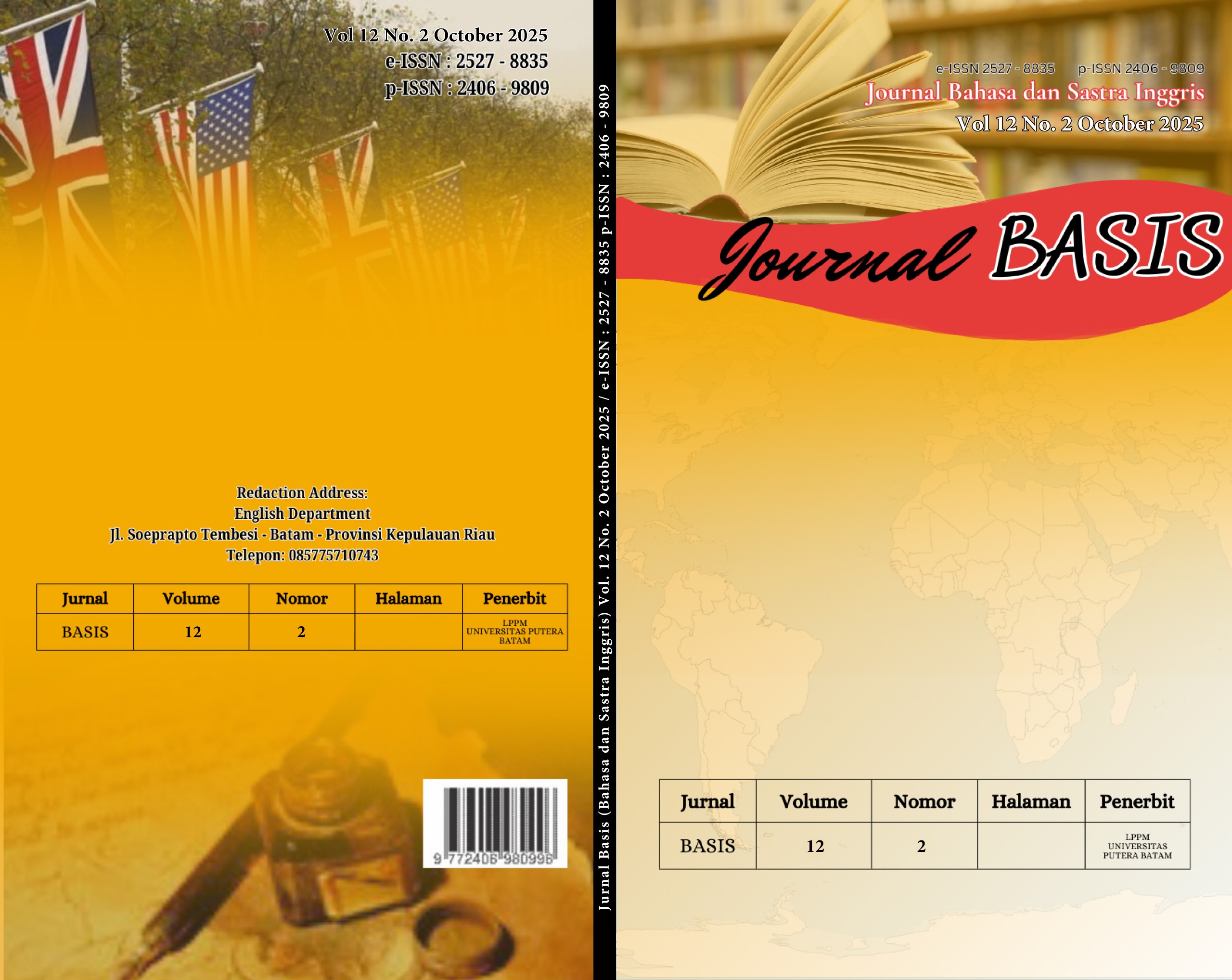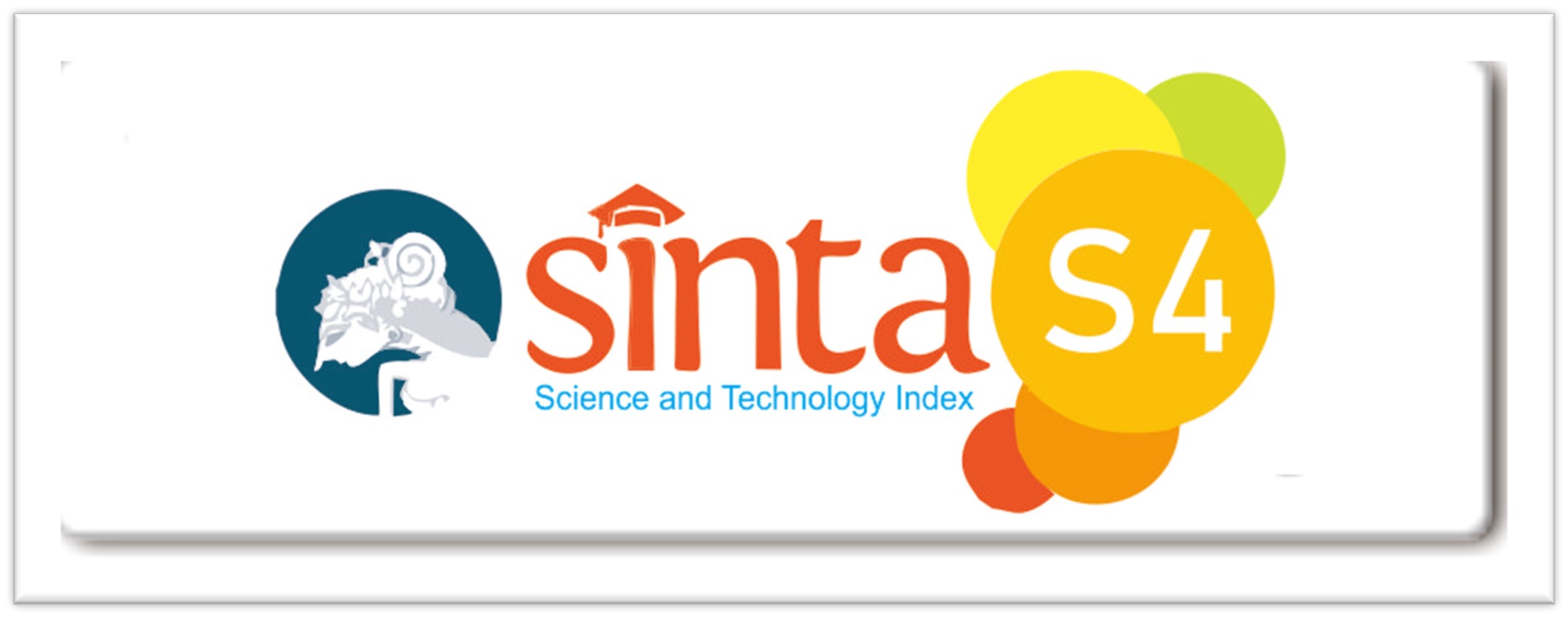FIGURATIVE LANGUAGE IN “THE NIGHTINGALE AND THE ROSE” SHORT STORY BY OSCAR WILDE
DOI:
https://doi.org/10.33884/basisupb.v12i2.10759Keywords:
Figurative Language, Short Story, Student Comprehension, Old LiteratureAbstract
This study investigates students’ ability to identify and interpret figurative language in the old literature short story “The Nightingale and the Rose” by Oscar Wilde. Figurative language such as metaphor, simile, symbolism, personification, and hyperbole plays an essential role in conveying deeper meanings within literary works. However, students often face challenges in understanding these elements due to complex language structures and cultural contexts. This study employed a mixed-methods descriptive approach, combining qualitative interpretation of students’ analyses with quantitative coding to calculate the frequency of figurative language types. The participants were 17 sixth-semester English Department students at STKIP Muhammadiyah Sungai Penuh. Data were collected through guided literary analysis tasks. The findings revealed that students showed varied comprehension levels: metaphor (58.83%) and simile (52.94%) were the most accurately identified, while symbolism (23.52%) remained the most difficult. The study suggests that guided reading and literary discussion significantly enhance students’ interpretative skills. Effective teaching strategies are needed to help learners appreciate figurative language in old literature.
References
Abrams, M. H., & Harpham, G. G. (2009). A Glossary of Literary Terms (10th ed.). Boston: Wadsworth Cengage Learning
Baldick, C. (2015). The Oxford Dictionary of Literary Terms (4th ed.). Oxford: Oxford University Press
Bristow, J. (Ed.). (2009). Oscar Wilde and modern culture: The making of a legend. Athens, OH: Ohio University Press.
Creswell, J. W., & Plano Clark, V. L. (2018). Designing and conducting mixed methods research (3rd ed.). Thousand Oaks, CA: SAGE Publications.
Ellmann, R. (1988). Oscar Wilde. New York: Vintage.
Gibbs, R. W. (2017). Figurative Language. Cambridge: Cambridge University Press.
Hunter, A. (2007). The Cambridge Introduction to the Short Story in English. Cambridge: Cambridge University Press
Hunter, I. (2010). Culture and Government: The Emergence of Literary Education. Palgrave Macmillan.
Iswahyuni, Dwi et al. 2024. Figurative Language in a Short Story Entitled “An Angel in
Disguise.” PROJECT: Professional Journal of English education.7 (2). 420-426. https://journal.ikipsiliwangi.ac.id/index.php/project/issue/view/361
Keraf, G. (2009). Diksi dan Gaya Bahasa. Jakarta: Gramedia.
Kövecses, Z. (2010). Metaphor: A Practical Introduction (2nd ed.). Oxford: Oxford University Press.
Mentari, Lidya Rona. 2023. An Analysis Figurative Language in Short Story “the Happy Prince” by Oscar Wilde. JESPI: Journal of English for Specific Purpose in Indonesia. 2(1). Pp. 33-40. https://ejournal.unib.ac.id/espindonesia/article/download/26092/11747/72987
Mixon, J.W. (2006). Stories and their Role in Cultural and Educational Contexts. New York: Routledge
Perrine, Laurence and R.A.R.P, Thomas. (1992) Sounds and Sense: An Introduction to Literature. (8ed). Orlando: Harcourt Brace College Publisher
Powell, K. (1990). Oscar Wilde and the theatre of the 1890s. Cambridge: Cambridge University Press.
Reading Comprehension Exercise – pdf worksheets – advanced level. The Nightingale and The Rose. Retrieved from https://agendaweb.org/reading/reading-pdf-6.html
Rabey, D. (2014). Oscar Wilde and the aesthetics of the self. Routledge.
Raby, P. (Ed.). (1997). The Cambridge companion to Oscar Wilde. Cambridge: Cambridge University Press.
Sembiring, Viona et al. 2020. An Analysis of Students’ Ability in Identifying Figurative Language in Mariah Carey’s Song. BASIS: Journal of Language and Literature, 7(1), 101-110. https://doi.org/10.33884/basisupb.v7i1.1748













 JURNAL BASIS (BAHASA DAN SASTRA INGGRIS)
JURNAL BASIS (BAHASA DAN SASTRA INGGRIS)
